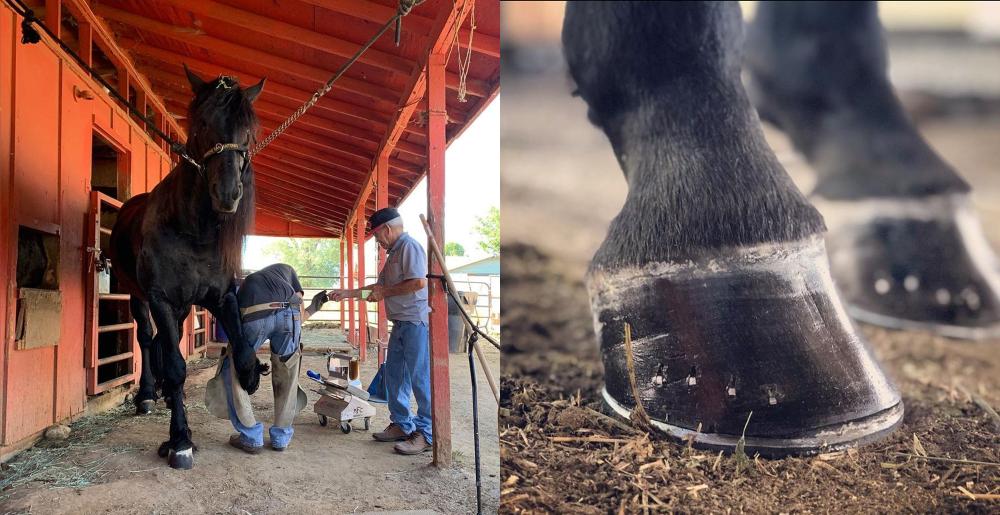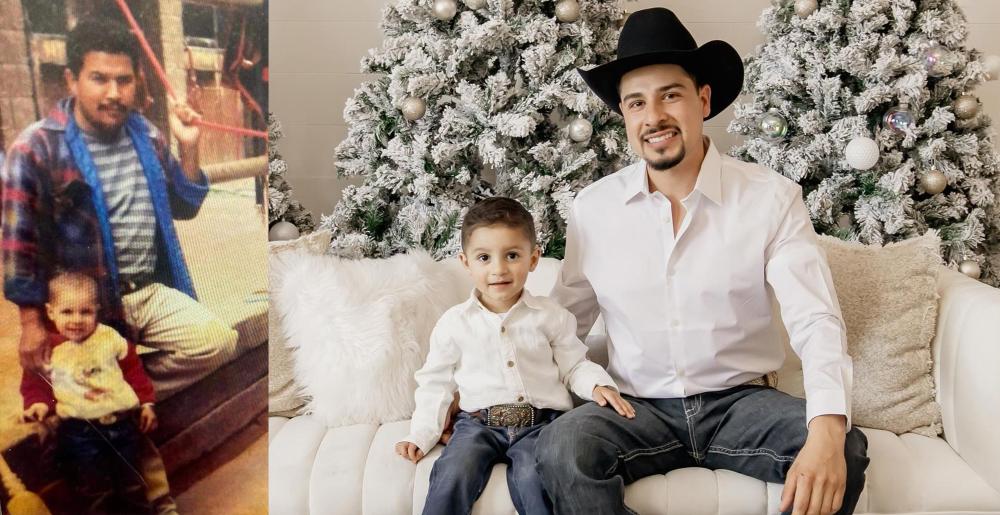
Jose Huezo
“Make sure the horses walk away from you better than they walk toward you.” Horseshoeing can be a solitary pursuit. But for Jose Huezo, it’s all in the family.
The next generation in a family of farriers
Jose Huezo can’t remember a time when he wasn’t surrounded by horses—and horse people.
His grandfather cared for two of Sea Biscuit’s offspring when he was a racetrack groom, a position he held for fifty years. His father, Audel Mendoza, was a groom before embarking on a lifelong career as a farrier—and he’s still working. Two of his uncles were farriers and his brother and his cousins have taken up the craft.
Jose himself is an experienced farrier and, even after being on the wrong end of some angry horses, he’s retained his early enthusiasm.
“I never really saw it as work,” he says. “It was fun. It was a chance to hang out with my Dad.”
Starting young, surrounded by family
Jose started riding with his Dad at ten—accompanying him to horse shows and barns, cleaning shoes, handing him tools, and helping him clean his rig. By 13, he was ready to go under a horse.
“Dad has pictures on an old flip phone of me pulling shoes. I was pretty scared at first,” he says. But fear quickly turned to passion. “After that, I just wanted to shoe. I wanted to get under horses as much as I could.”
He learned to use tools and, by 15, he had his first clients. By 18, he was driving a ’98 Ford Bronco, accumulating tools, and running his own business.
While he built his practice, Jose attended Rio Hondo College. He’d ride with the respected farrier Carlos Robles and, occasionally, his uncles. He’d talk shop with his farrier brother and cousins.

It started as a chance to help my dad. But it became a love of the craft.
Learning the value of a good client
Like most farriers, Jose experienced challenges when establishing his practice.
He took on pretty much everything he could as he built his book, and not all of his clients were ideal. He was working seven days a week to keep up. And then, a few years in, a horse kicked him, throwing him in the air and dislocating his shoulder. He was out for two months and lost some clients.
Fortunately, while attending the rodeo to support his fiancée, the rider Jasmine Vega, things started to turn. He gained some new clients and, this time, he was more selective about who he took on.
“There’s a real difference between good and bad clients,” says Jose. “Good clients schedule regular visits, clean their stalls and their horses, have cross-ties if needed, and, most of all, communicate with the farrier.”
There’s a real difference between good clients and bad clients.

Making room for his own family
About six months ago, Jose made another change. He started taking weekends off.
It was one thing to work seven days a week when he was single and building his practice. (“What else was I going to do,” he jokes.) But now he has a family of his own—a son named Audel Huezo—and Jose was missing out on milestones.
He’d come home from work and see Audel doing something he’d never seen him do before—saying a new word, taking a step. “Jasmine would tell me, ‘He’s been doing that for three days!’”
This changed things. “Now I want to spend my extra time with Audel,” says Jose.
That’s not to say he’s slacking off. Jose still plans out his week on Sundays and by 5:00 a.m. Monday he’s under a horse—beating the SoCal traffic.

Every day is a chance to learn.
Even though his business is established, Jose’s knowledge is still growing. “I think I’m absorbing more information now than ever,” he says.
A lifetime of learning from the farriers in his family, and mentors like Carlos Robles, continues to serve him well.
Jose’s father had two rules: Never be late, and never make excuses. Those maxims continue to shape Jose’s practice every day.
I’ve learned most of what I know from family.

Q & A with Jose Huezo
Jose’s practice, which spans Los Angeles and Riverside counties in California, focuses on Quarter Horses, with a mix of other horses. We spoke with him about horsemanship, his father’s advice, and how he deals with the physical demands of the job.
You’ve always been a horseman. What’s that taught you?
By riding a horse, you learn so much. You can feel what they’re trying to do and what you’re making them do.
Your father was a major influence on you. What advice did he give you besides “be on time and never make excuses?”
There were no unimportant calls. He would say, “Shoe every horse like it’s the last time you’re shoeing that horse.” But he also knew our limits as farriers. He’d tell me, “It’s our job to shoe the horse. It’s not our job to train the horse.”
If your son becomes a farrier, what advice would you give him?
Don’t listen to everyone. Don’t ride with everyone. But listen to—and ride with—people you trust. If you listen and watch, you’ll learn there is more than one way to approach most problems. Even though it’s humbling, be willing to see new approaches.
Your family has shaped you as a farrier. Have there been any other mentors?
I started working with Carlos Robles. Carlos was the U.S. farrier for the Tokyo 2020 Olympics, and he’s slated to serve as the farrier for the 2028 Olympics. Besides sharing his technique, he coached me on how to talk to clients.
When I traveled with Carlos and other California farriers to a summit in Ohio, Carlos’ mentor Chuck Esau suggested I take Mustad Rep Tim Shannon’s course. I loved the course so Chuck introduced me to Tim. We hit it off, and I’ve ridden with him a few times since. Tim has helped me a lot. I had a question about frog support, and he went the extra mile to answer it.
Being a farrier is physically punishing. What do you do to recover?
Overall health is everything. I’m also a fan of good chiropractic care and occasional massages. I have a massage therapist who I see a couple of times a year. Time off is important too. Jasmine and I will now even take an occasional beach vacation.

What Mustad products are you liking?
Southern California has very hard dirt and a lot of barns with cement floors. That affects what I use.
I’m a fan of Mustad’s Soft ComfortMix Hoof Cushion. Unlike some other dental impression material, it’s still on the hoof when I come back for my next appointment.
For shoes, I like the Delta Challenger TS8s. They are nice and wide and give you enough material to add mechanics into your shoe.
I use Capewell Endura Slim Blade 5s in just about everything. My practice has a lot of Quarter Horses, and they drive well into thin walls. It feels good while driving. You can drive the nail higher, and it deteriorates well.
The green tang, Heller eXceL Original is my go-to rasp. It finishes beautifully.
A few years ago, your answer to the question “What do you do in your spare time” would have been “What’s spare time?” What’s your answer now?
I make handmade shoes in my forge. I raise Boer goats. And I’m the groom when Jasmine is riding.
Want to hear more from Jose? Find updates and follow him on Instagram.


